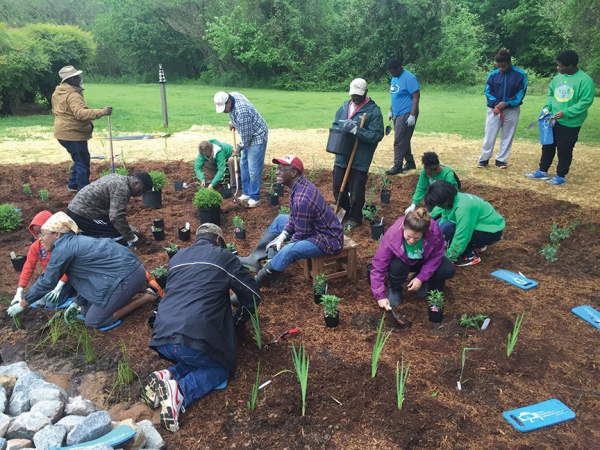Disciple: More Ways to Care for Creation

By Summerlee Walter
While many churches in our Diocese are working on composting as a form of environmental stewardship, there are several other ways congregations engage in caring for Creation.
LEED-CERTIFIED COMMUNITY LIFE CENTER
Sixteen years ago, St. Mary’s, High Point set a goal to grow and expand the Kingdom of God in their community. As part of fulfilling that goal, the church built a Community Life Center across the street from their 1928 church building. The St. Mary’s Community Life Center houses St. Mary’s Music Academy, English as a Second Language classes, NA, AA and EA meetings, and special events.
As part of the building process, St. Mary’s Environmental Stewardship Committee worked with the Community Life Center Steering Committee and the vestry to construct the building so it qualified for LEED (Leadership in Energy and Environmental Design) certification. Sponsored by Green Business Certification, LEED certification criteria include site selection (to mitigate sprawl), water conservation efforts, energy efficiency measures, recycling construction waste, using local materials, promoting renewable energy and clean air quality indoors, and landscaping with native plants.
According to Gray Hudson, the project architect, St. Mary’s Community Life Center is among the first LEED-designated Christian church buildings in North Carolina.
RAIN GARDEN
St. Ambrose, Raleigh, is located in the Walnut Creek wetland, an ecosystem home to species as
diverse and unexpected as blue herons and mink. Beginning with the construction of Raleigh’s first water tower in the 1880s, however, the city used the ecosystem as a dumping ground for wastewater. Working from the idea that water laced with raw sewage needed to flow only 50 feet before becoming potable, city officials had no qualms about pouring wastewater into the Rochester Heights community occupied by African-American citizens.
Beginning in 1996, St. Ambrose sought to redress this example of environmental racism and rehabilitate the natural ecosystem. Flooding from Hurricane Fran highlighted the extent to which the wetland was no longer able to perform its natural function of efficiently absorbing water back into the ground. Joining with Trinity, Fuquay-Varina, the church organized annual clean-up days and lobbied for rezoning of the Walnut Creek wetland. Their efforts helped create the 42-acre park and Walnut Creek Wetland Center that now sits across from the church.
St. Ambrose’s most recent effort to restore the wetlands has taken the shape of a 600-square-foot rain garden. A rain garden is a depressed area in landscaping designed to capture rainwater runoff from parking lots, sidewalks, rooftops and other impermeable surfaces and redirect it back into the ground. Plants in the rain garden help to uptake pollutants from the water. These gardens help to prevent flooding and soil erosion while also stopping polluted rainwater from making its way into sources of drinking water.
Strategically located next to the church’s parking lot, the rain garden was built in partnership with the Raleigh Stormwater Quality Cost Share Program as part of the city’s efforts to protect and steward its water supply and the health of Raleigh’s citizens. The city matched a $5,000 grant from American Rivers, a nationwide river conservation organization, that helped to fund the project.
Not only does the rain garden have a remarkable absorption rate — a city official who sampled the soil said it was the best in Raleigh — but it also draws people out into nature. The Rev. Jemonde Taylor, rector of St. Ambrose, reports seeing parishioners stand on the stepping stones in the rain garden and look out at Walnut Creek, something he hadn’t seen before.
Summerlee Walter is the communications coordinator for the Diocese of North Carolina.
Tags: North Carolina Disciple
